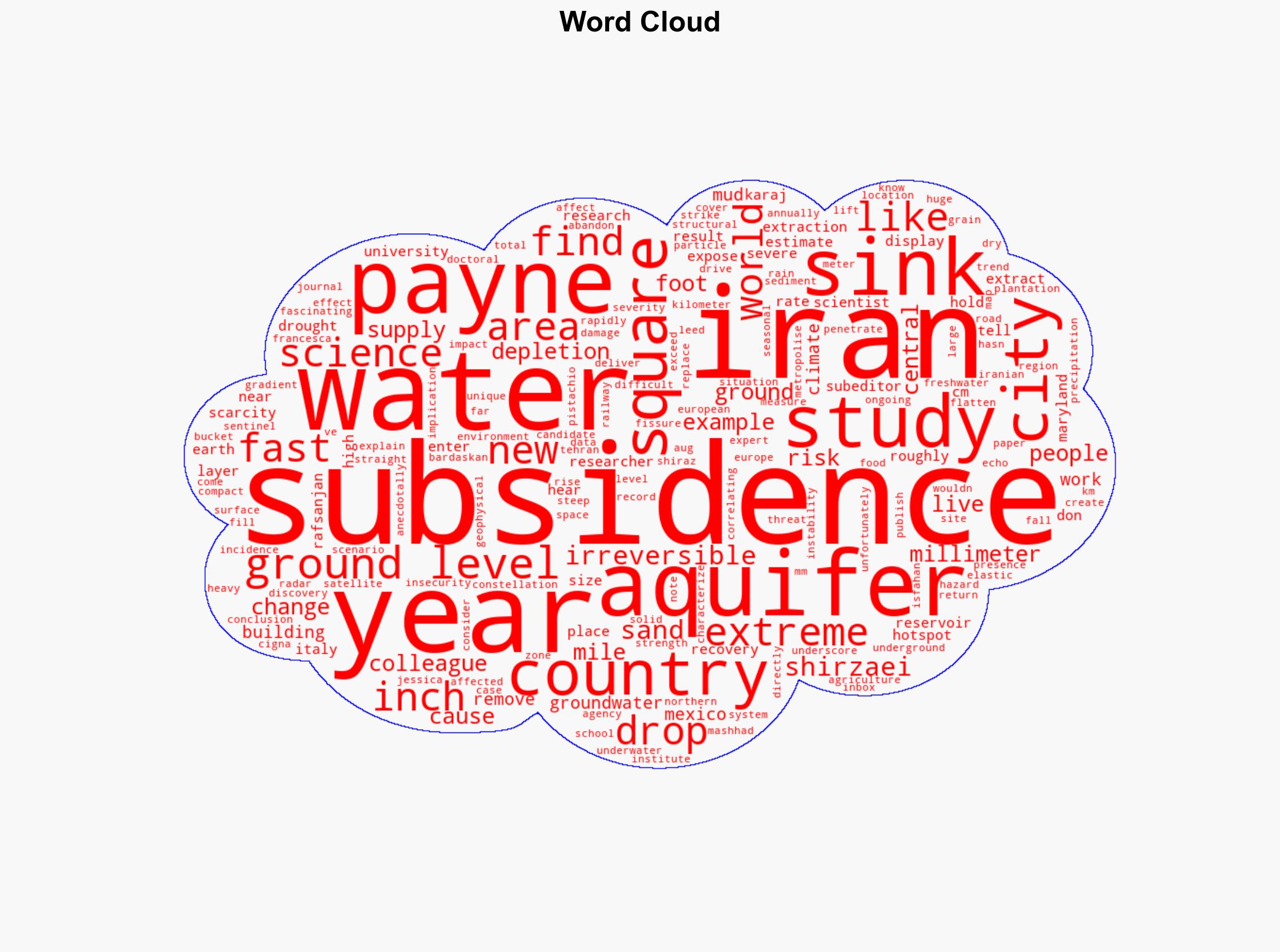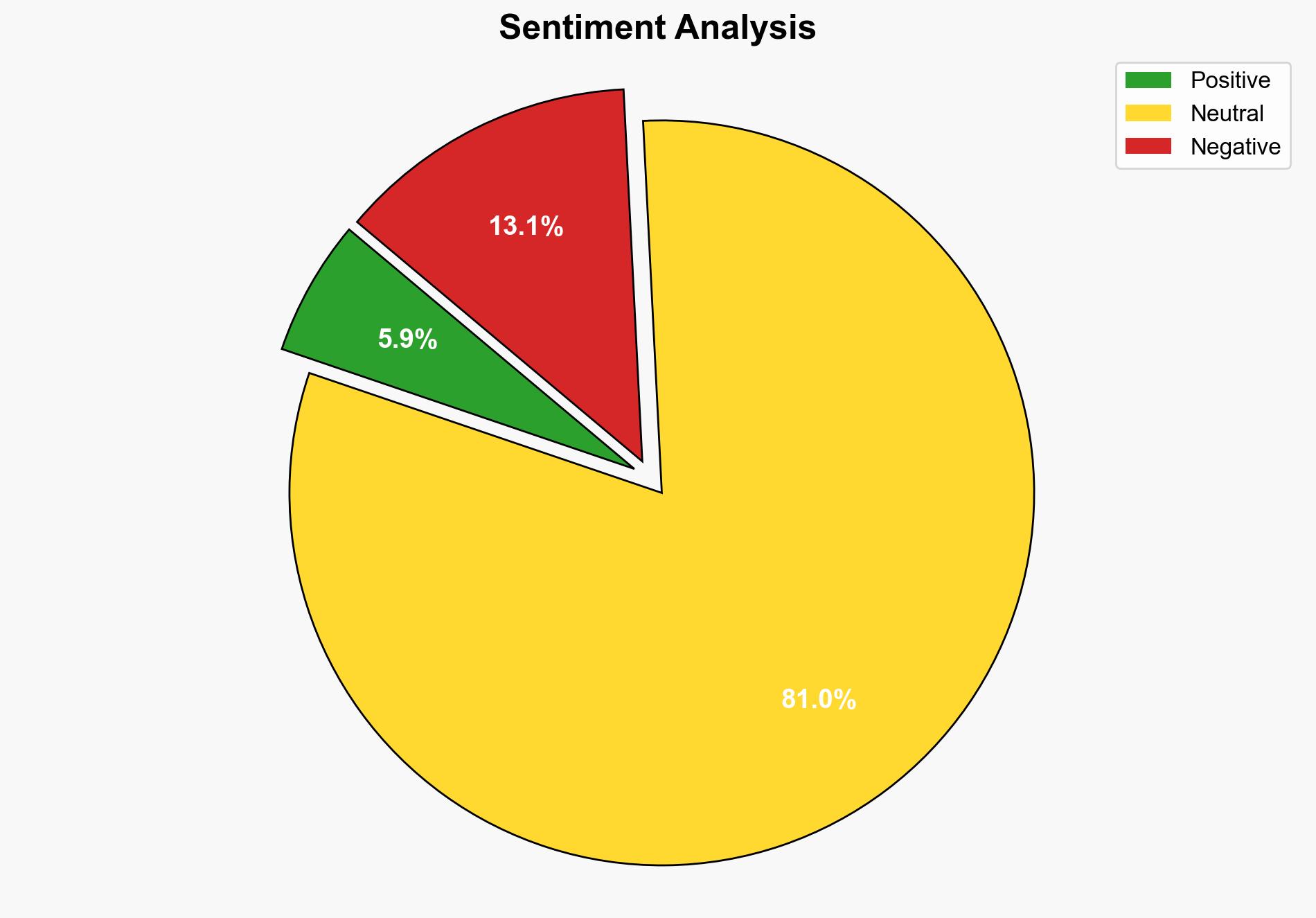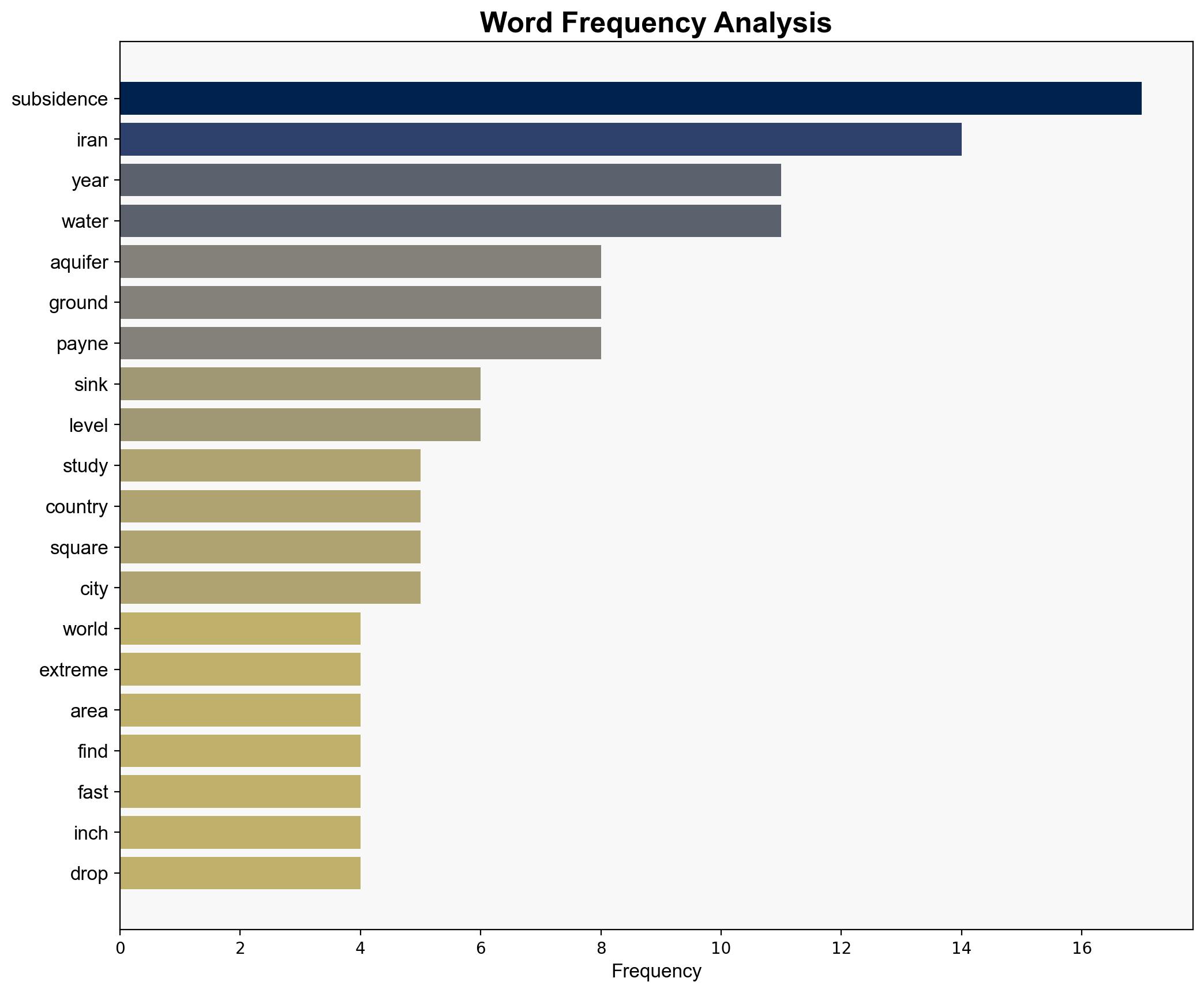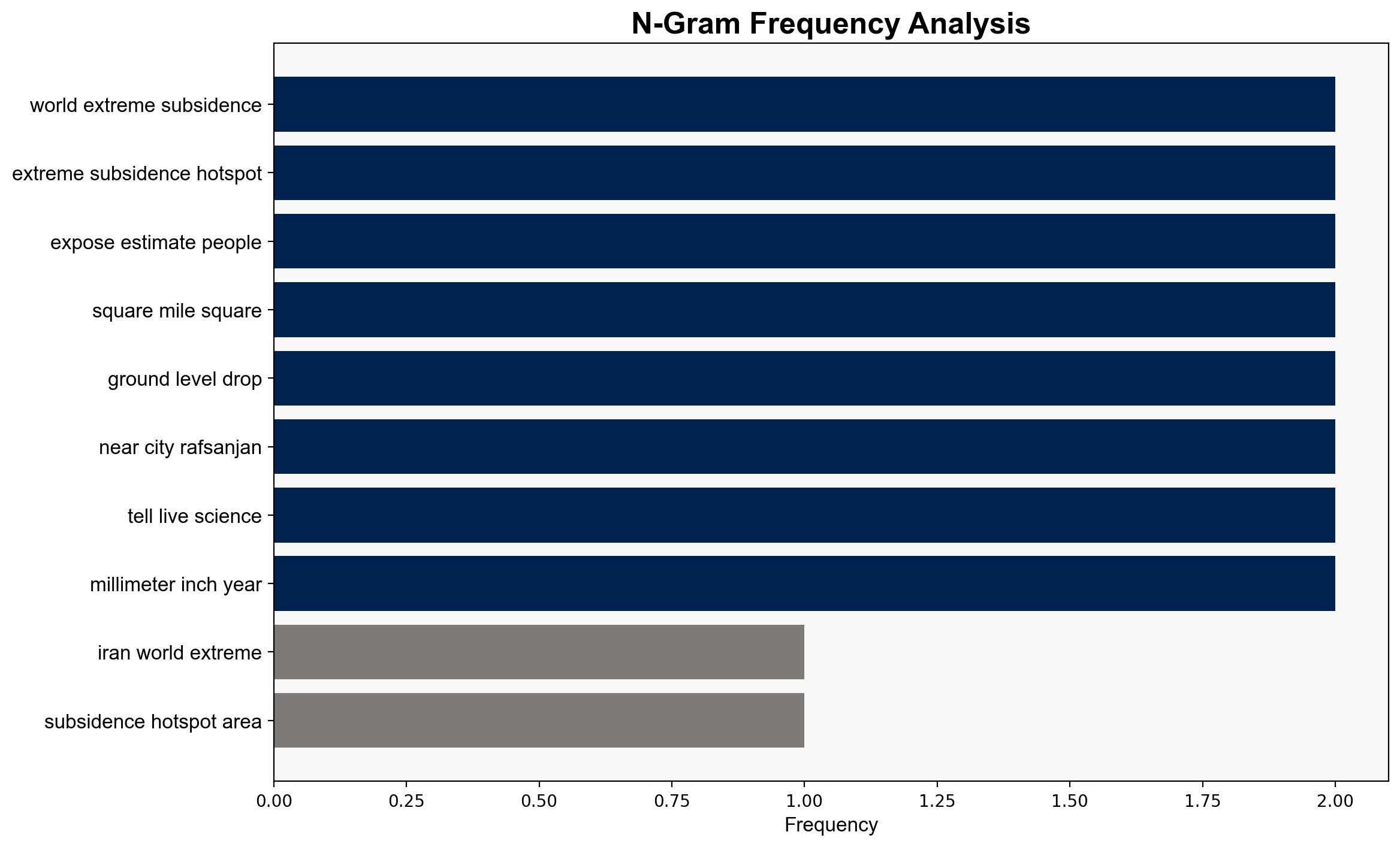Iran among ‘world’s most extreme subsidence hotspots’ with some areas sinking up to 1 foot per year study finds – Live Science
Published on: 2025-09-30
Intelligence Report: Iran among ‘world’s most extreme subsidence hotspots’ with some areas sinking up to 1 foot per year study finds – Live Science
1. BLUF (Bottom Line Up Front)
Iran is experiencing severe land subsidence due to excessive groundwater extraction, posing significant risks to infrastructure and population safety. The hypothesis that subsidence is primarily driven by unsustainable water management practices is better supported. Confidence level: High. Recommended action: Implement immediate water management reforms and infrastructure assessments to mitigate damage and ensure public safety.
2. Competing Hypotheses
1. **Hypothesis A**: The primary cause of subsidence in Iran is excessive groundwater extraction for agriculture and urban use, exacerbated by ongoing drought conditions.
2. **Hypothesis B**: Subsidence is primarily due to natural geological processes, with human activity playing a secondary role.
Using ACH 2.0, Hypothesis A is more strongly supported by the data, which highlights the correlation between groundwater extraction and subsidence rates, particularly in agricultural areas like Rafsanjan. Hypothesis B lacks sufficient evidence, as the study emphasizes human-induced factors.
3. Key Assumptions and Red Flags
– **Assumptions**: It is assumed that the data accurately represents the subsidence rates and that the primary driver is groundwater extraction.
– **Red Flags**: Potential bias in attributing subsidence solely to human activity without considering geological factors. Limited data on the effectiveness of current water management policies.
– **Blind Spots**: Lack of comprehensive data on subsidence impacts across all affected regions and potential underreporting of infrastructure damage.
4. Implications and Strategic Risks
– **Economic**: Infrastructure damage could lead to significant repair costs and economic disruption.
– **Geopolitical**: Water scarcity may exacerbate regional tensions and affect Iran’s agricultural output, impacting food security.
– **Psychological**: Public awareness of subsidence risks could lead to decreased trust in government management of natural resources.
– **Cascading Threats**: Continued subsidence could lead to increased structural instability, affecting transportation networks and urban centers.
5. Recommendations and Outlook
- **Mitigation**: Develop and enforce stricter water management policies to reduce groundwater extraction rates.
- **Infrastructure Assessment**: Conduct comprehensive evaluations of critical infrastructure in high-risk areas.
- **Public Awareness**: Increase public awareness campaigns on water conservation and subsidence risks.
- **Scenario Projections**:
– **Best Case**: Successful implementation of water management reforms stabilizes subsidence rates.
– **Worst Case**: Continued subsidence leads to widespread infrastructure failure and economic disruption.
– **Most Likely**: Partial reforms slow subsidence but do not fully mitigate risks.
6. Key Individuals and Entities
– Jessica Payne, researcher involved in the study.
– Francesca Cigna, external researcher providing context on global subsidence trends.
7. Thematic Tags
national security threats, environmental security, infrastructure risk, water management, regional focus





